On Dec. 3-4, Child Care Aware® of America’s Executive Director of Respite Care of America (RCoA) Fran Jamison and Senior Vice President of Program Impact Ariel Ford participated in the National Child Care Innovation Summit: Business Leaders in Action. The event, hosted by the U.S. Chamber of Commerce Foundation and Executives Partnering to Invest in Children (EPIC), and presented by the David and Laura Merage Foundation, aimed to "dive deep" into how the business community can support their employees and working communities in tackling child care challenges that are preventing families and economies from thriving. Fran coordinated experts for a panel that highlighted the U.S. Military’s approach to child care, how parts of it might translate to the private sector, and how child care plays a critical role in national security. Ariel presented on a panel that highlighted emerging issues in child care in disaster preparedness, relief, and resilience.
Here’s the first part of a Q and A with Fran and Ariel about key takeaways from the conference and their sessions.
 Q: How does child care play a role in national security?
Q: How does child care play a role in national security?
A: Fran: Child care is a mission readiness factor and a force multiplier. We have seen this fact firsthand in the past decade especially as many military families have time and time again listed child care as one of their top factors in deciding whether they will re-enlist along with housing, medical, and military spouse employment. Taking care of military families ensures soldiers can be ready to deploy at any time and at a moment’s notice. The DOD recognizes today more than ever before that child care is a quality-of-life issue for its service members and a matter that needs regular and reoccurring review and oversight to ensure its meeting the mark for families.
Child Care Aware® of America’s
Executive Director of Respite Care of America (RCoA) Fran Jamison
Q: What has Child Care Aware of America learned from its partnership with the U.S. Military?
A: Fran: From my point of view, I think we’ve learned that child care is an extremely important component of our economy and can be a major pain point for every business, including the military, when there are challenges and shortages. We also know that child care is a major investment. From my time working for DOD I know that the federal government spends approximately a billion dollars a year on the military child care system. The number of children in child care has grown exponentially since my dad enlisted in 1975 when you compare it to the 150,000+ children in care today. Child care, in my opinion, when done right also includes quality. All programs sponsored by the DOD or utilizing fee assistance provided by the DOD are DOD-certified and/or accredited through a national accrediting organization. But the commitment from DOD is not just financial; it’s also through its intentionality of ensuring that military leadership is keenly aware that child care is vital for its military mission to be successful, and leadership and oversight is needed at all levels, including at the installation. Installation commanders are now required to visit their on-base child care facilities regularly and take part in site visits and “inspections” to validate corrective actions from inspection findings and ensure safety measures are in place as required.
 Q: What are emerging issues and themes in child care in emergency preparedness, response, and recovery that we must pay attention to? Why should we? What’s at stake if we don’t?
Q: What are emerging issues and themes in child care in emergency preparedness, response, and recovery that we must pay attention to? Why should we? What’s at stake if we don’t?
A: Ariel: The intersections of extreme heat, weather, community preparedness, and health are emerging issues in child care emergency preparedness, response, and recovery. These interconnected challenges create cascading effects:
Child Care Aware® of America’s
Senior Vice President of Program Impact Ariel Ford
- Environmental challenges and extreme weather events: The increasing frequency and severity of extreme weather events—such as hurricanes, wildfires, and flooding—pose significant threats to child care providers and the families they serve. These events disrupt routines, damage infrastructure, and create health risks, making child care systems particularly vulnerable.
- Emergency planning and recovery across communities: Communities not adequately served by emergency resources face greater burdens during and after emergencies. Child care providers in these areas (rural, low-income, immigrant, etc.) often operate with fewer financial reserves, less resilient infrastructure, and limited access to recovery funds. This exacerbates pre-existing imbalances and makes it harder for families and providers to recover.
- Health impacts of emergencies: Emergencies have cascading effects on physical and mental health. Families rely on child care providers for stability, trauma-informed care, and access to nutritious meals through programs like the Child and Adult Care Food Program (CACFP). When child care systems are disrupted, these protective factors disappear, leaving children at greater risk of poor health outcomes. In addition, providers often face compounded stress as they navigate personal recovery, financial strain, and the demands of attempting to maintain high-quality care for children. Without adequate support, many providers are unable to reopen, leading to long-term disruptions for families and communities.
Why should we pay attention? Emergencies amplify existing challenges and create new stressors for children, families, and providers. Child care is critical infrastructure — a vital foundation for recovery and long-term stability and essential for children’s health, family stability, and community resilience.
What’s at stake if we don’t? Without robust preparedness and recovery systems, child care providers may permanently close, leaving families without care and exacerbating inequities. When providers cannot reopen due to financial, regulatory, or logistical barriers, entire communities suffer. Children lose access to safe, nurturing environments that support their health and development, while families and providers face instability and economic hardship. This compounds inequities, particularly in communities already facing systemic challenges. Prioritizing child care in emergency planning is essential for equitable and sustainable recovery.
Continue the conversation in Part Two



